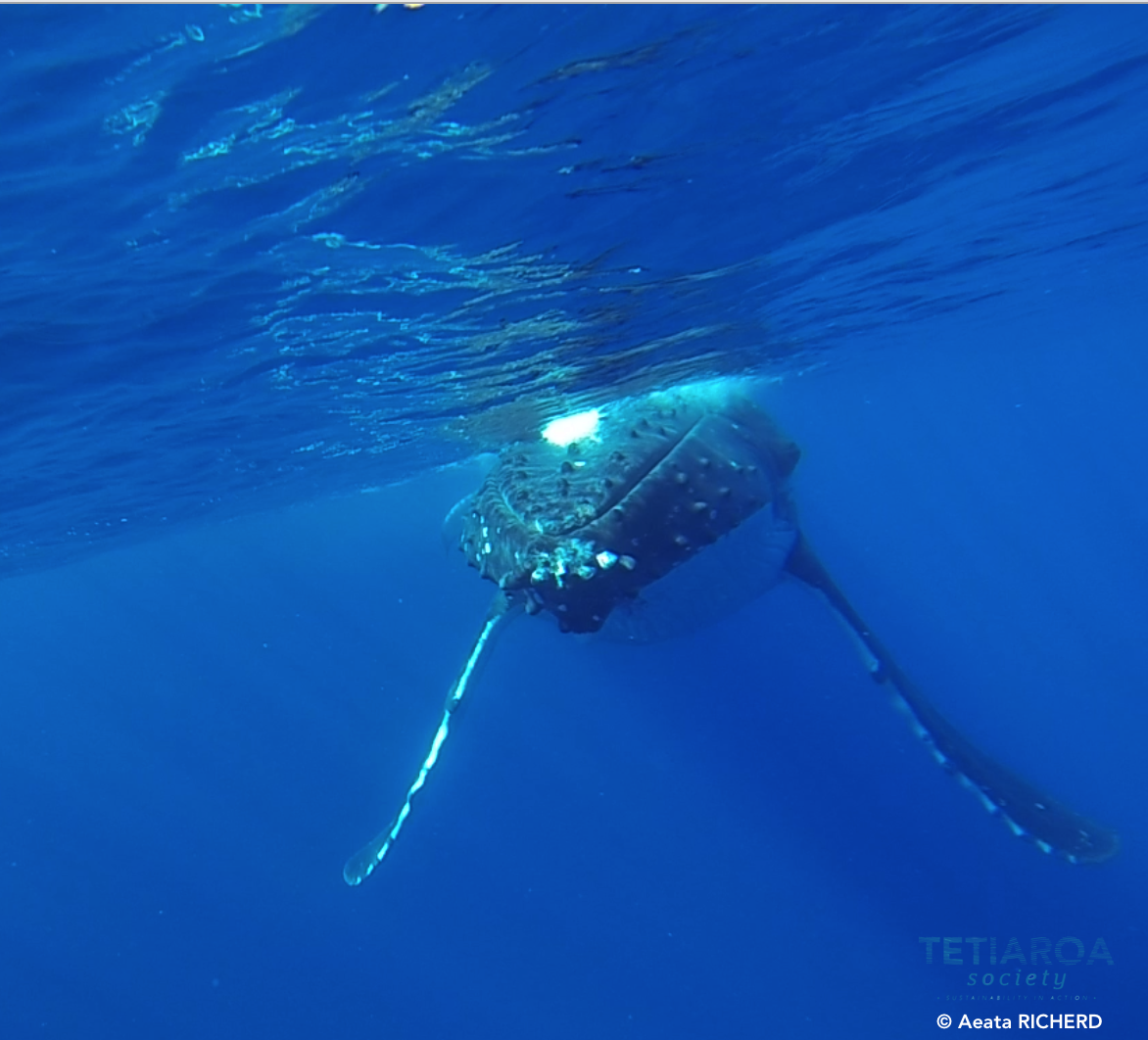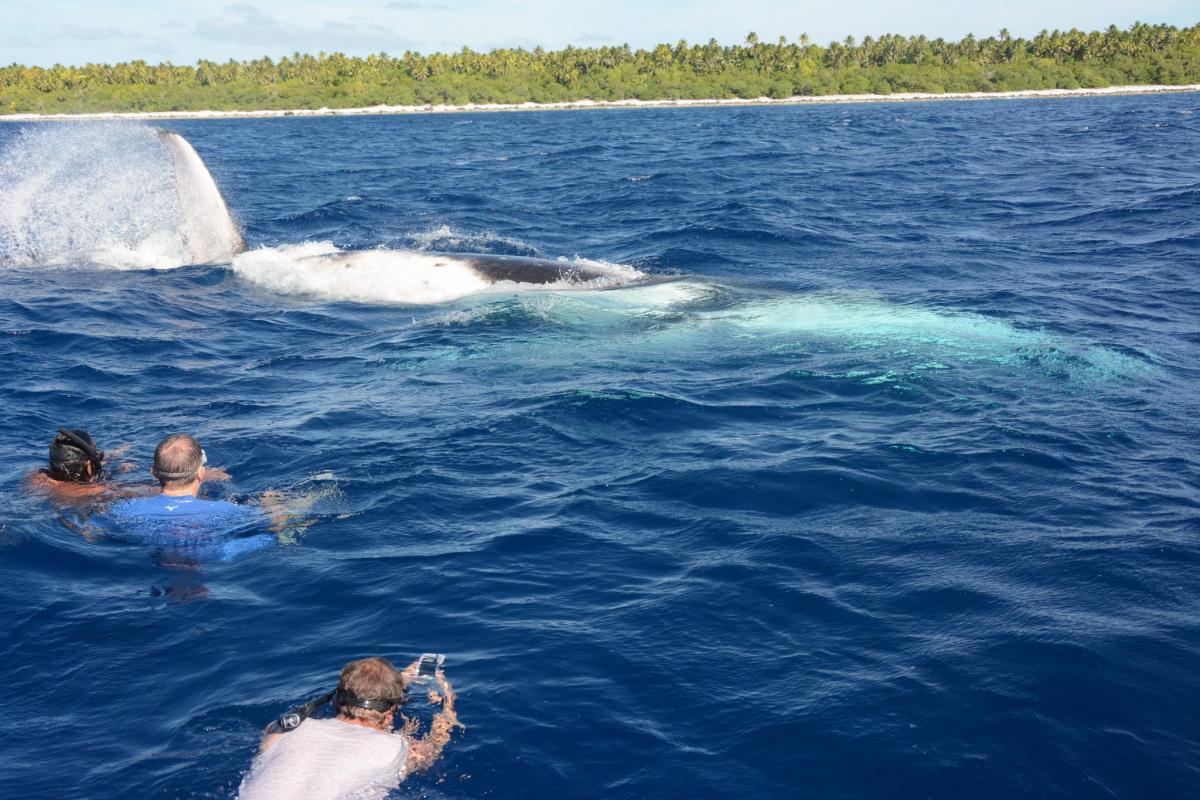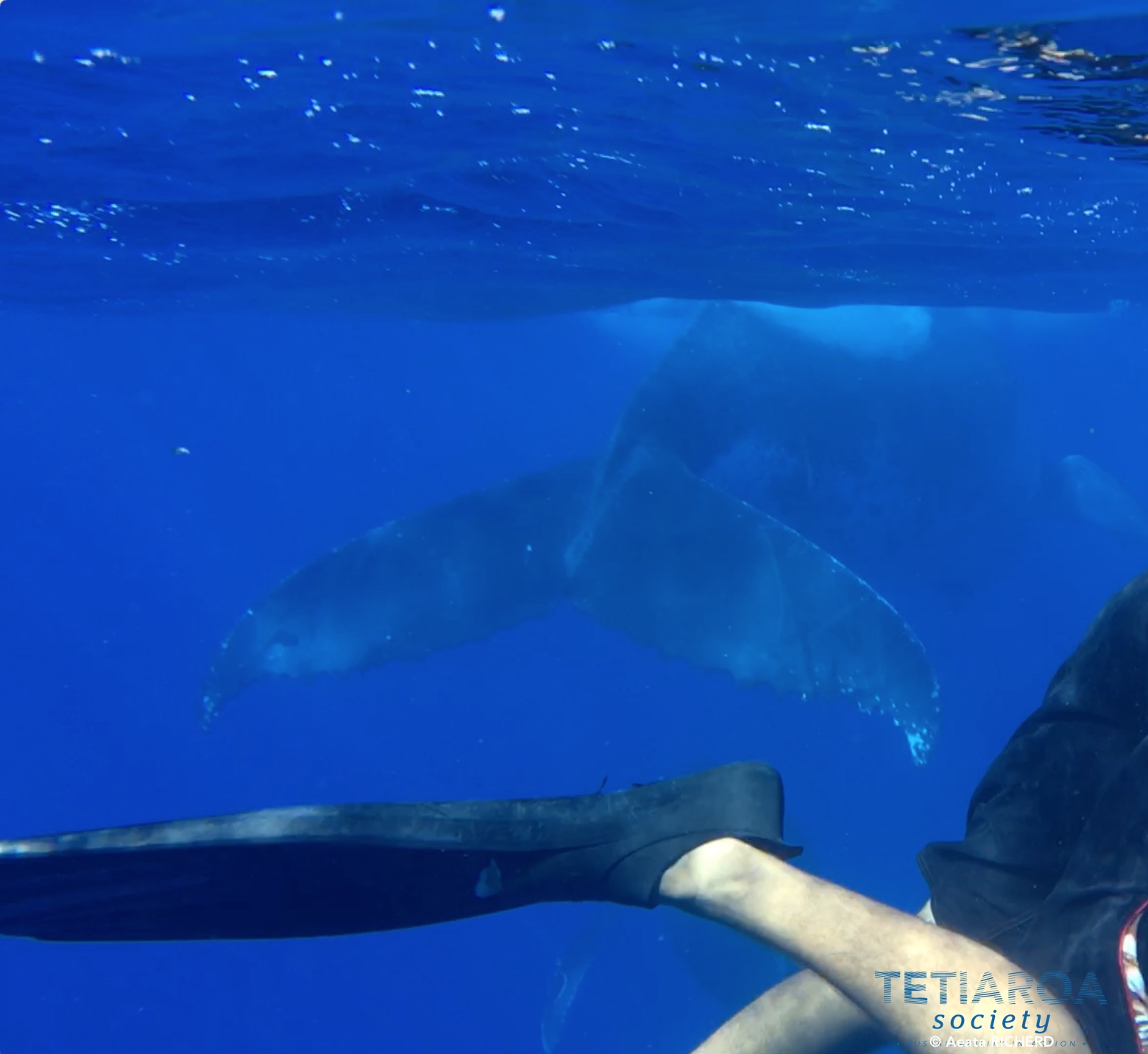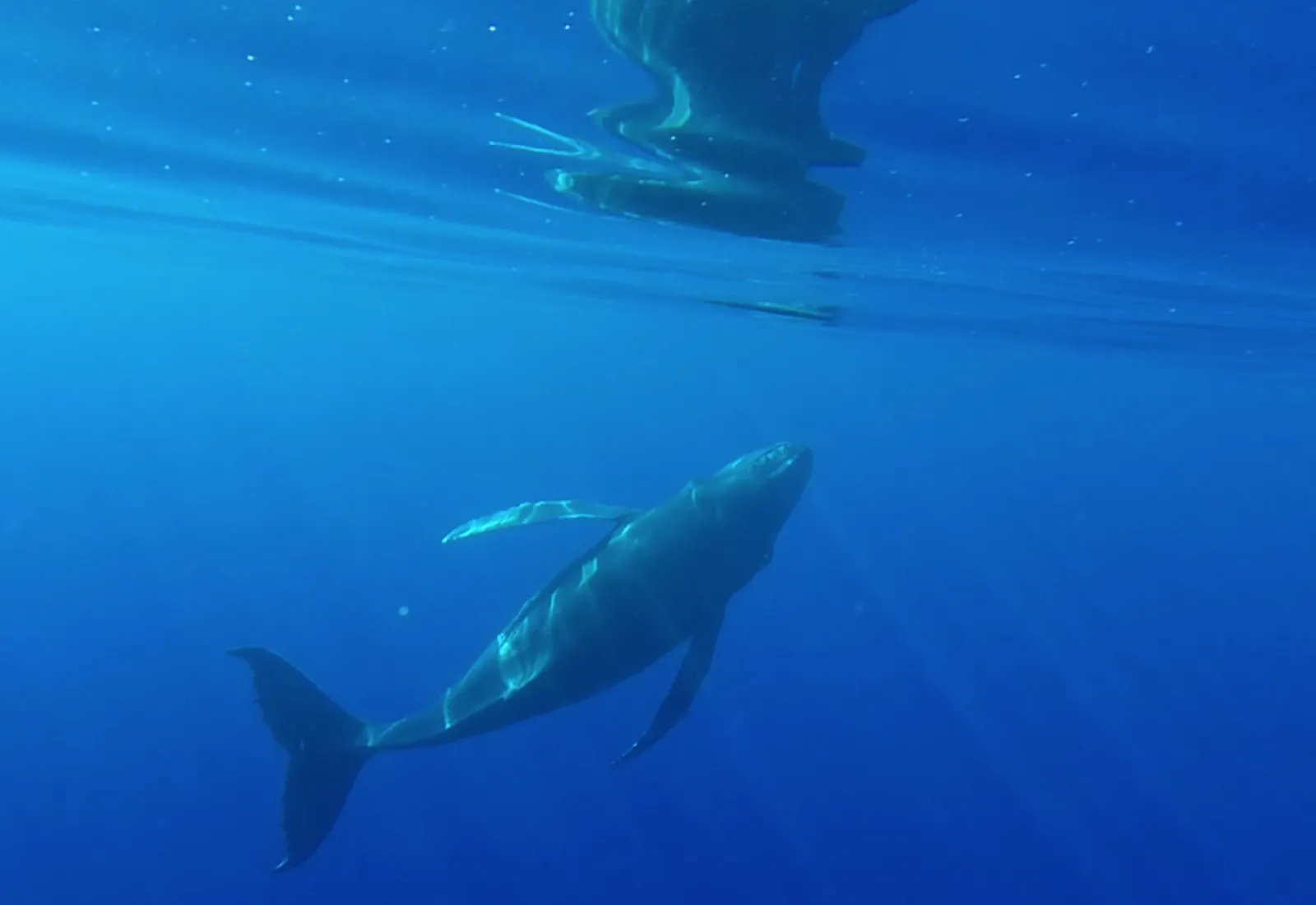
On June 28th we had our first humpback whale sightings off Motu Aie on the east side of Tetiaroa. Every year, these cetaceans evoke a mix of feelings among Polynesians, varying from excitement to fear; from insignificance, in the presence of giants, to a sense of privilege to be before such beauty. These southern humpbacks are highly revered in Polynesian myths and legends and throughout Polynesia today. Despite their phenomenal strength, they are peaceful animals and only prey on a microscopic crustaceans called krill.
In 2002, French Polynesia became a sanctuary for the protection of whales and dolphins. This vast territory of 5,5 million square kilometers (the size of Europe), comprises 118 high and low islands, which offer the cetaceans different eco-systems (oceanic, coastal and lagoon) in which to evolve.
Humpback mama with her calf.

Migration
Megaptera novaeangliae migrate during austral winter from their feeding grounds in Antarctica, to their reproduction areas in the the Pacific islands, where the whales will stay until summer. These migrations of 6000 kilometers each way, take them 2 to 4 months to complete. The Polynesian waters, with warm temperatures (21-27°C) which offer both coastal and lagoon systems, provide optimum conditions for humpback whales to reproduce, give birth, care for their calves, and rest.
From June to December, these marine mammals perform various impressive shows. Oftentimes, in calm weather conditions, it is possible to get into the water and observe a resting female with her calf. More than one curious calf has been known to approach swimmers. However, swimmers must be careful not to initiate the approach, as this might bring about a change in their behavior. Other times, males asserting dominance and seeking to woo a female can be observed.

Guests can swim with the whales.
OBSERVATION TIPS:
On the surface, humpback whales are easily identified, thanks to their enormity, their acrobatics, and the spouts of air and water which rise up to 2 meters from the surface of the sea. Whales can dive to more than 50 meters and stay under water for up to 30 minutes.
When whale-watching, bring binoculars so that the whales can be observed at a distance. Be respectful of these creatures, and remember that they have come from far away to Polynesian waters to find refuge and tranquility.
The rules to follow are:
- Do not approach within 100 meters of a whale and a calf.
- Keep at least 30 meters between yourself and dolphins and other marine mammals.
- Reduce speed to 3 knots within a range of 300 meters around whales.
- Always keep the engine running and in neutral if the animal approaches the boat voluntarily.
- Avoid any sudden change in direction and engine speed.
- Follow a path parallel to moving animals.
- Do not cut off the animal's path.
- Do not block them against the reef.
- Do not separate a whale from its calf.
- Do not touch them.
- Do not approach whales within 30 meters while swimming.
- Do not swim towards animals.
- Do not dive to animals.
- Do not encircle the animals.



